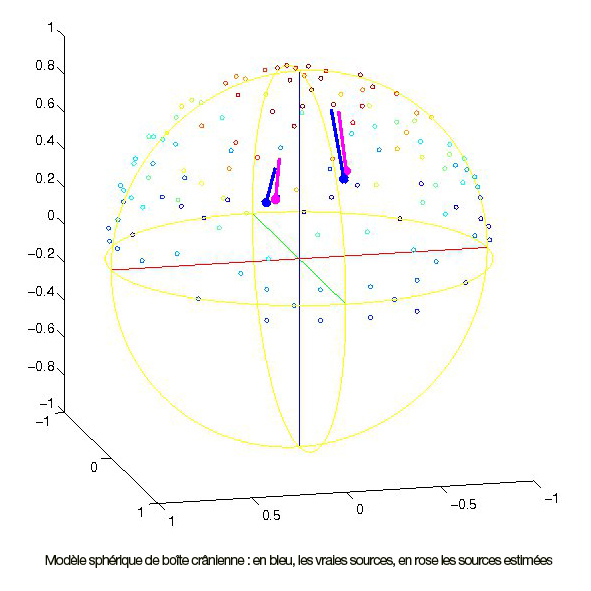Inverse problems, applications in dedicine and geophysics
Project manager at the CMA: Jean-Paul MARMORAT
The CMA is tackling, in collaboration with the APICS and ODYSSEE projects of the INRIA, a category of inverse problems concerning the detection of unipolar or dipolar sources.
The data is made up of isolated measurements of a potential carried out at the frontier of a certain 3D field. The unknowns are the positions and moments of sources internal to the domain that generates this potential. Outside of these sources and inside the domain, the potential verifies a Laplace equation.
In biomedical applications the domain is the cranium, the potential is electric or magnetic, the sources are epileptic focuses, and the measurements are therefore electro or magneto-encephalograms.
In geophysical applications, the domain is the globe, the potential is gravitational, the sources material inhomogeneity, we therefore measure fluctuations of the potential in relation to the reference potential.
This poorly identified problem is dealt with by rational 2D approximation methods in various section planes. The singularity lines of approximants allow a return to the source positions.
These methods are tested on simulated or real data.
See the software: FindSources3D                                                    
 
A collaboration was developed in 2013 with German company BESA (Brain Electrical Source Analysis) to pursue research on the subject and exploit the source localization software together.
 
 
 
 








